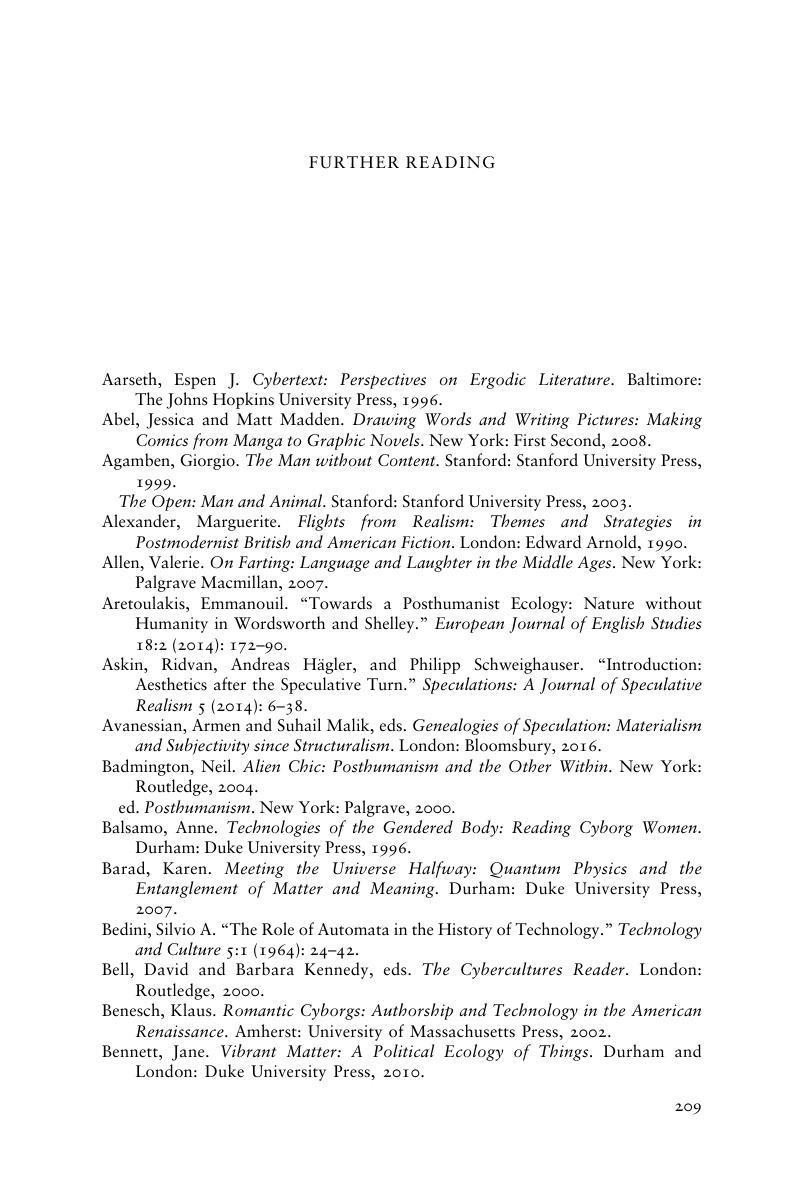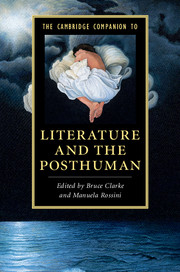Book contents
- The Cambridge Companion to Literature and the Posthuman
- The Cambridge Companion to Literature and the Posthuman
- Copyright page
- Contents
- Figures
- Contributors
- Preface
- Acknowledgments
- Chronology 1: The Posthuman
- Chronology 2: Posthumanism
- Part I Literary Periods
- Part II Posthuman Literary Modes
- Part III Posthuman Themes
- Further Reading
- Index
- Cambridge Companions to …
- References
Further Reading
Published online by Cambridge University Press: 07 January 2017
- The Cambridge Companion to Literature and the Posthuman
- The Cambridge Companion to Literature and the Posthuman
- Copyright page
- Contents
- Figures
- Contributors
- Preface
- Acknowledgments
- Chronology 1: The Posthuman
- Chronology 2: Posthumanism
- Part I Literary Periods
- Part II Posthuman Literary Modes
- Part III Posthuman Themes
- Further Reading
- Index
- Cambridge Companions to …
- References
Summary

- Type
- Chapter
- Information
- The Cambridge Companion to Literature and the Posthuman , pp. 209 - 218Publisher: Cambridge University PressPrint publication year: 2016



